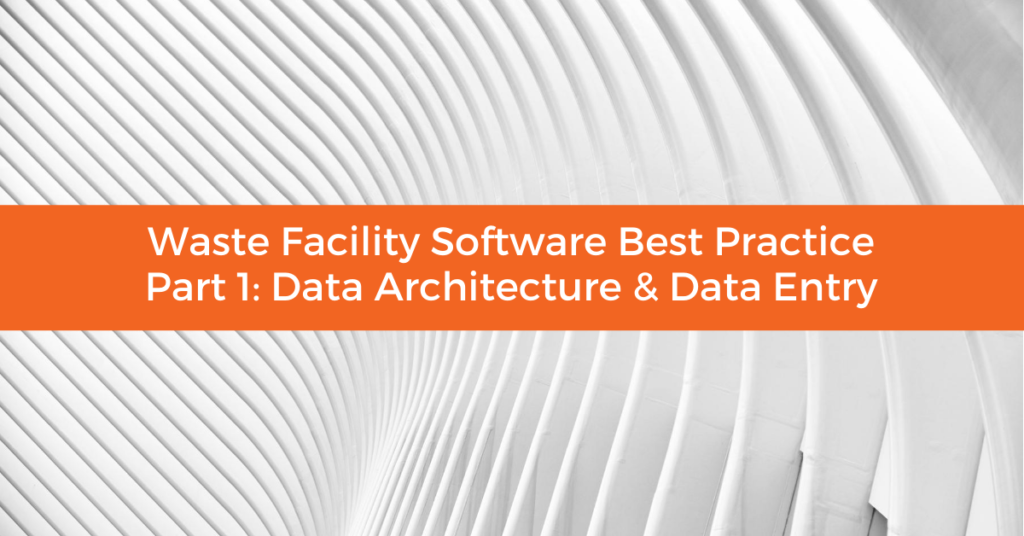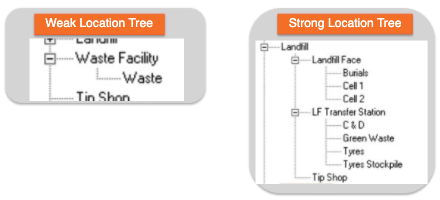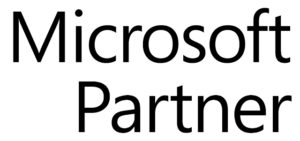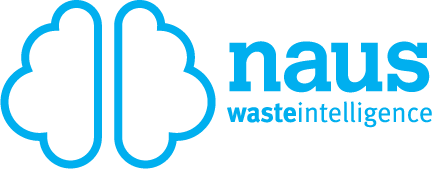
There are so many things you need to think about when operating a facility, and your facility software is probably just one item on that list.
For your organisation to get the most out of your facility software, a series of best practices should be in place. This will ensure you have the solid groundwork needed to take your waste facility to new heights and improve operations through the use of our software.
To understand what best practices to put in place, you first need to ask yourself a few questions:
- What challenges or problems do you see and what is the cost or impact of these to your organisation?
- What needs to be top of mind for you to get the most out of your investment?
- How does the software meet the needs of your organisation?
Sometimes you don’t necessarily see something as a problem until you start to look at it. After asking yourself these questions, you may come to identify challenges you didn’t know existed and realise the cost of that challenge is far greater than you expected. So, once you have a clear understanding and answer to the above questions, you’ll gain a much clearer idea of what you hope to get out of your software.
Some of the most common organisational challenges linked to waste software include:
- Accurate, efficient and error-free transfer of data into financial systems
- Ensuring the facility transaction process is as fast, accurate and available as possible
- Flexible administration
- Data integrity within the system
- Ongoing futureproofing and evolution of the system
- Digitised real-time engagement
This is part 1 in our 3 part series about Waste Facility Best Practice. Click the links below to read the other two parts of this series:
- Part 2: Data Administration Best Practice
- Part 3 Best Practice for the Ongoing Health of Your Waste Facility
Data Architecture Best Practice
20 years ago, waste data was either purely focused on tonnes and price, or it didn’t exist at all. Today, waste data architecture is growing, and it will continue expanding over the next 5 to 10 years. Mandalay’s plan is to be right here driving that change.
The waste industry needs to think of data beyond just capturing a transaction at the weighbridge. So much more value can be gained from waste data. Read about how the right data can improve your waste facility operations and community waste habits to learn more.
But when it comes to best practice for your data architecture, our key message here is that understanding the data relationships between systems is important.
You have different types of data sitting in various systems from your weighbridge software to your finance system. You need to think about the relationship of data and how it relates to multiple systems within your organisation.
Ask yourself: How is that data currently being transferred between systems and is your reporting of this data manual or automated?
Here at Mandalay, it’s our job to enable integrations to and from your waste system to remove any manual effort involved in transferring this data across systems. We are seeing more requests for interfacing with financial systems and this is very quickly becoming the norm, making this a fast-growing data architecture best practice for waste facilities.
What Do Our Clients Need to Be Doing for Data Architecture Best Practice?
In summary, the following areas need to be right at a minimum:
- Integration to billing with no manual data entry or re-entry
- Internal reporting/process to reconcile EOM
- Direct reporting to clients from the system without data re-entry
Benefits of Automation and Integration
How is your data and information currently being captured? For some organisations, 3 or 4 manual interventions are involved in the process. Streamlining that through automation and integration saves time and improves accuracy of your data.
What information has to be re-entered into multiple systems? Whether you’re re-entering the same information into your finance system or CRM system, that data re-entry is time consuming. So how do you automate and integrate it? Here at Mandalay we can help customers think through that process and be involved in developing the best solution.
Benefits of a Single Source of Truth
When you start to look at the cost of poor or limited data architecture over time, you’ll understand why automation and integration are valuable investments to help provide you with a single source of truth for your data.
Having a single source of truth makes it much easier to manage and report on your essential data. No more manual transfers of data with errors and lack of data integrity.
Our Mandalay software does not operate in isolation. It is a pivotal part of your organisation as it gets fed into multiple sources within your organisation. Mandalay’s Facility Product Suite can integrate with your finance systems, customer systems and regulatory compliance to provide that single source of truth you need for your organisation.
Data Entry Best Practice
The team at your site make many decisions on the fly constantly. Our focus at Mandalay is on how to improve your data quality, reduce your workload and provide you with the right guidance on decisions to help you focus on service rather than data entry.
You should be focused on customer service, and when any angst around the system is minimised and you have all the right data in front of you to offer a customer with a service and the correct information with confidence, your focus will be where it needs to be.
We want to give you the tools you need to manage the organisation effectively, and helping you with data entry best practice is a great place to start.
Location Trees
Improve your data structure setup by taking the time to create meaningful location trees within Mandalay’s system. Perfecting this area will improve the quality of your data and reporting.
Below we have provided an example of a weak location tree vs a strong location tree. More branches mean a higher quality location tree:
If you don’t set up the location tree and products well in the beginning, you will be stuck with lots of manual reporting. This may lead you to believe that your reporting is poor, but in reality, reporting isn’t the issue. Your poor location tree is often the real cause. Disciplined setup leads to easier transactions and easier reporting.

Favourites
Utilising ‘Favourites’ in our system is all about linking data together to:
- Make the execution of the transaction consistently correct
- Reduce manual data entry for the operator
- Reduce operator error
- Speed up the transaction process
Using favourites simplifies the impact from the operator’s perspective and is one factor that can be used to enhance the system even further.
But how do you implement favourites and controls to help you get consistency in that data quality?
You can’t deny that if an operator has to make manual selections for each and every transaction, errors will occur. Having favourites in place significantly minimises this risk. By reducing data entry, operators can instead focus on data verification to further ensure the quality of data being entered into the system.
Want to make the most of your data architecture and improve your data entry within Mandalay’s Facility Product Suite? Contact us to find out more.


